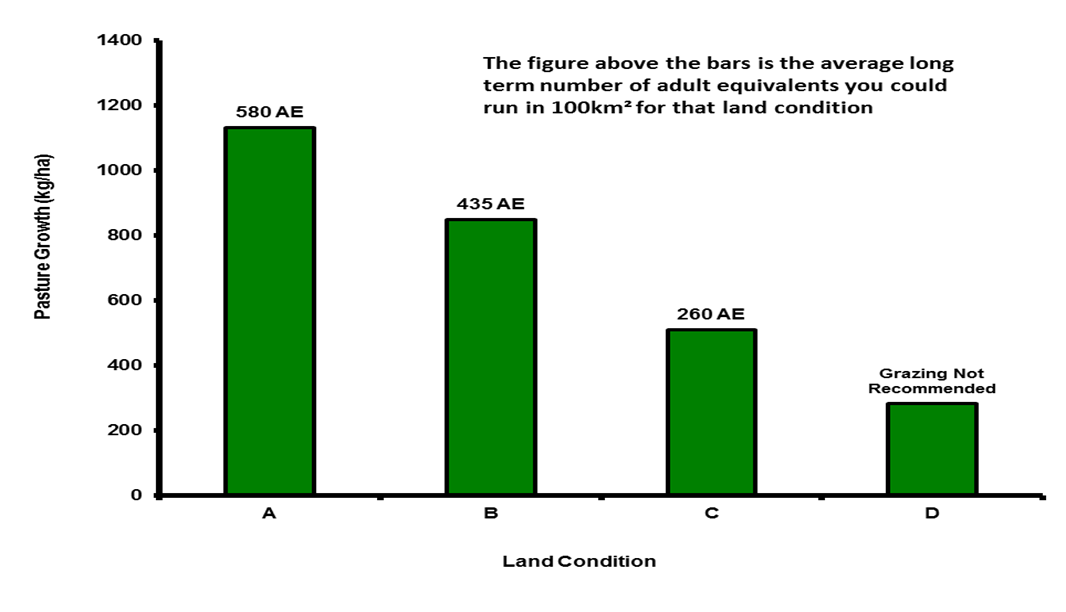Managing pastures for production and profit in central Australia
Highlights from a presentation given at the Undoolya Field Day by Dionne Walsh, Department of Primary Industry and Resources, Rangelands Program Leader -- dionne.walsh@nt.gov.au
Take home messages:
- pastures are a valuable (but sometimes under-appreciated) asset
- kilograms of beef turned off is a key profit driver in extensive grazing businesses
- to optimise the kilos turned off you need to ensure your productive country is well watered, you have appropriate genetics and your cattle are well nourished
- when you manage stocking rates you manage nutrition.
What is native pasture worth?
A thousand steers eat about 3,000 tonnes of grass a year. To picture this, that’s the same as about 11,700 round bales of hay. At an indicative price of $50 per bale for native grass hay, the pasture to feed this mob of steers is worth over $500,000 a year. Multiply that up over all the cattle on a typical station and you can see that grass is a very valuable asset indeed.
Optimising kilograms turned off
You get paid for the kilograms you sell, not how many head you run. In rain-fed native and naturalised pasture systems there is a biological limit to how many kilograms of beef can be produced. This is determined by carrying capacity and cattle productivity. The carrying capacity of a piece of country is driven by the amount of palatable pasture (which is determined by the type of country, how well watered paddocks are, rainfall and the health of the pastures). The DPIR has considerable expertise in this area and can help you to calculate the current and potential carrying capacity of your paddocks and station.
Beef production (kilos) is optimised when your country is well watered, you get good live weight gains, brand a lot of weaners and minimise deaths. Biological rates (weight gain, reproduction and mortalities) are driven by genetics and NUTRITION. In the absence of irrigation, fertilisers and superior pasture species, the biggest way that pastoralists can influence nutrition in any given year is through balancing supply (feed) and demand (animal numbers), augmented by supplementation where required. So when you manage stocking rate you are actually managing nutrition.
Managing supply and demand
In central Australia, there can be a thirty-fold difference in pasture growth from year to year just due to rainfall. For example, in 2008, open woodland in good land condition only grew about 110 kg of grass per hectare. In the good year of 2011 these same pastures grew 3,400 kg/ha. Short of keeping pastures in the best land condition possible, there is little that pastoralists can do to influence supply. The demand side of the equation is much more under your control, and all the better if every mouth is contributing to production!
Taking too much grass hurts your hip pocket
If you push pastures by grazing them too hard too often, ground cover and grass production decreases. This leads to more bare patches for weeds and undesirable grasses to invade, increased run-off and soil erosion. But perhaps more seriously for the pastoral business, it decreases the amount of palatable pasture that grows, which directly reduces the number of cattle you can run. Letting your good condition country turn to poor condition HALVES the number of cattle you can carry. For example, (see above table) on Todd land system (flood out country) you can see how land condition affects pasture growth and carrying capacity.
Give feedback about this page.
Share this page:
URL copied!
